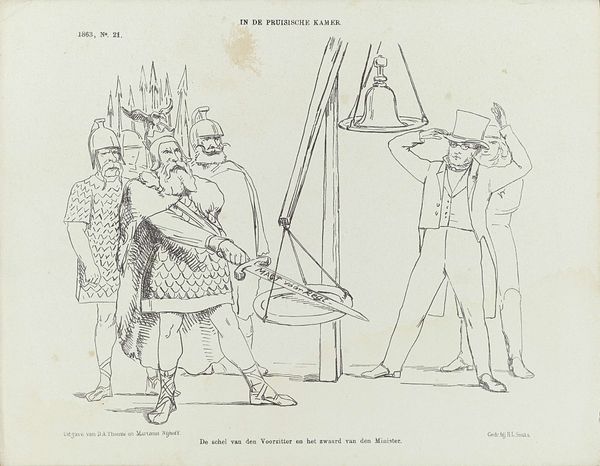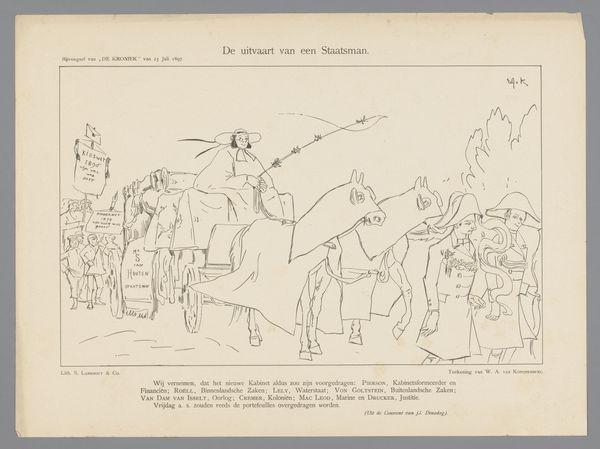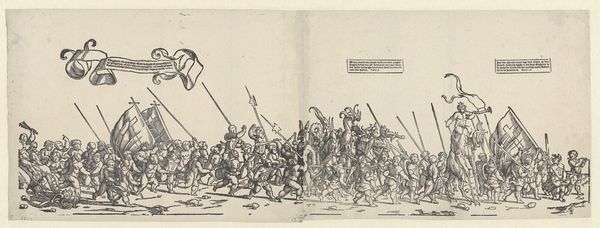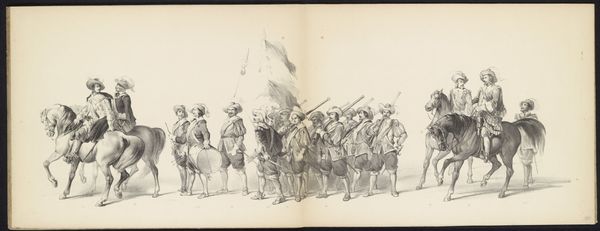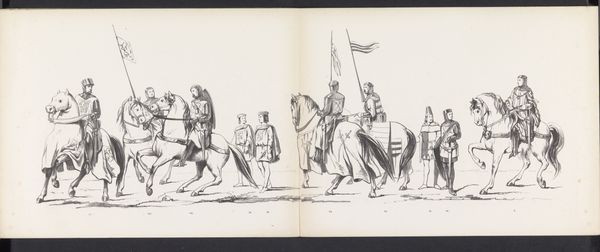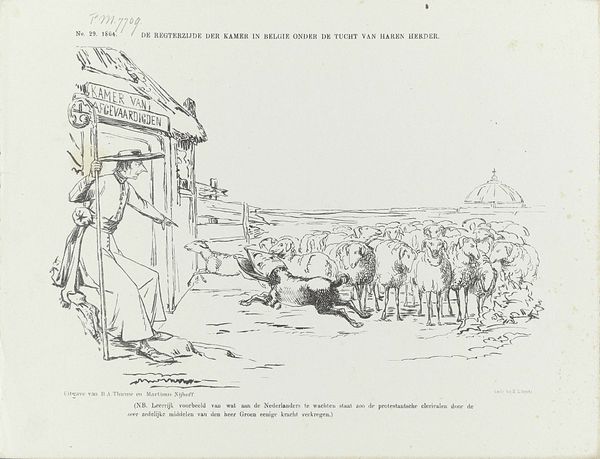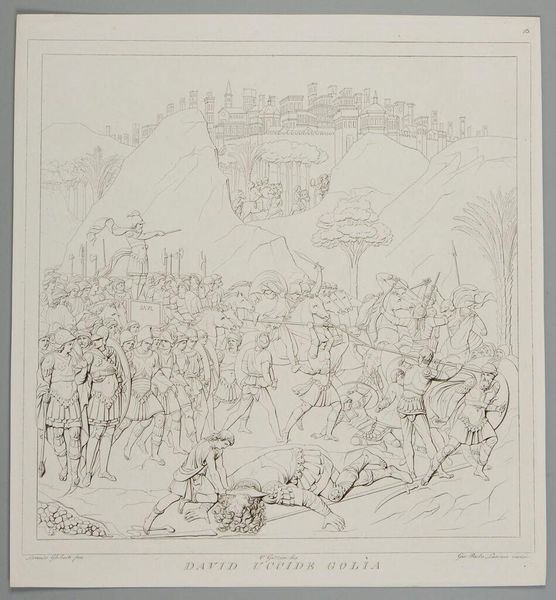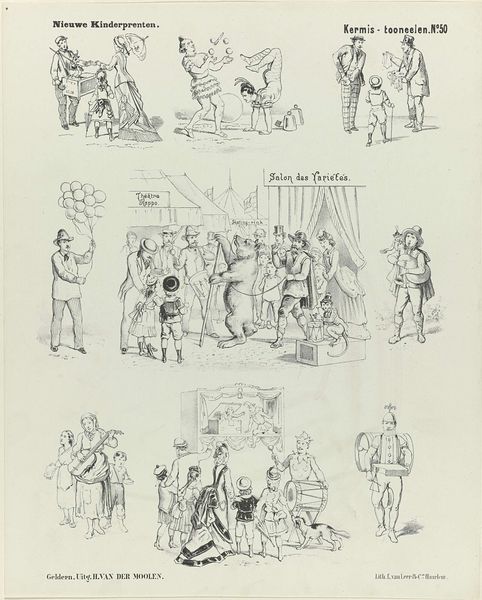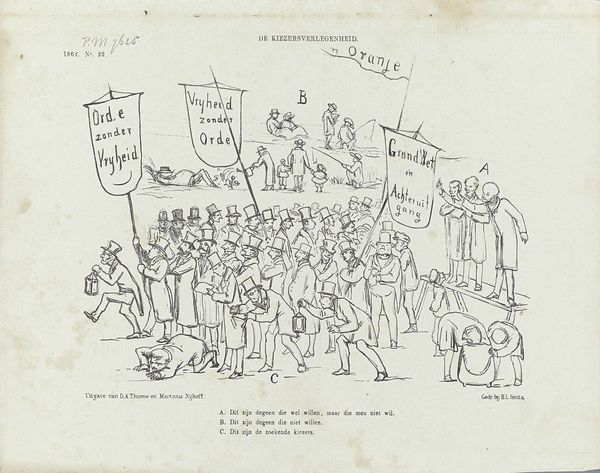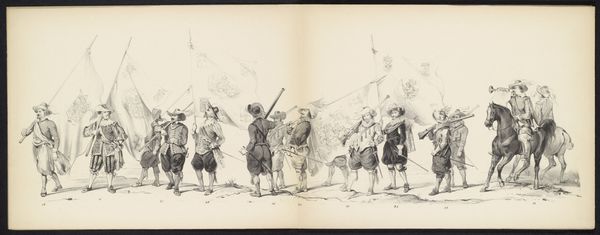
Spotprent op het programma van de antirevolutionairen tegen de schoolwet, 1865 1865
0:00
0:00
drawing, print, ink, pen
#
drawing
#
narrative-art
# print
#
caricature
#
ink
#
comic
#
pen
#
genre-painting
Dimensions: height 215 mm, width 275 mm
Copyright: Rijks Museum: Open Domain
Editor: This pen and ink drawing is called "Spotprent op het programma van de antirevolutionairen tegen de schoolwet, 1865," created in 1865 by Johan Michaël Schmidt Crans. It's packed with figures and symbols and has a definite satirical feel. What jumps out at you when you look at this piece? Curator: The visual language speaks volumes about the cultural anxieties of the time. Notice how the artist employs caricature to exaggerate the features of the figures. The banner proclaims "Schoolwet- en Religiestrijd," which tells us this is about a struggle related to school laws and religion. How does this relate to your understanding of the period? Editor: Well, it suggests there was significant opposition to educational reforms happening then. But what’s with the figures dressed in historical garb, like the person blowing the horn who appears to be from the 17th century? Curator: That anachronism is crucial! By placing contemporary political figures in historical clothing, the artist is drawing a parallel. The artist wants the audience to recall the religious conflicts of the 17th century. It invites the viewer to consider whether the current debate mirrors those earlier struggles. What feeling does that juxtaposition evoke? Editor: I see – so it's not just a snapshot of a specific moment, but it's invoking this long history of tension and disagreement. That adds so much depth to what seemed like a simple caricature at first. It feels very loaded. Curator: Precisely. Images operate as cultural memory. Schmidt Crans utilizes visual tropes to elicit emotional reactions and solidify political positions. Reflect on what you observed - the impact goes beyond political commentary, highlighting how symbols create dialogues with history. Editor: This has opened my eyes to how political cartoons function! They are not just funny drawings, but powerful commentaries linking the past and present using a shared visual vocabulary.
Comments
No comments
Be the first to comment and join the conversation on the ultimate creative platform.

